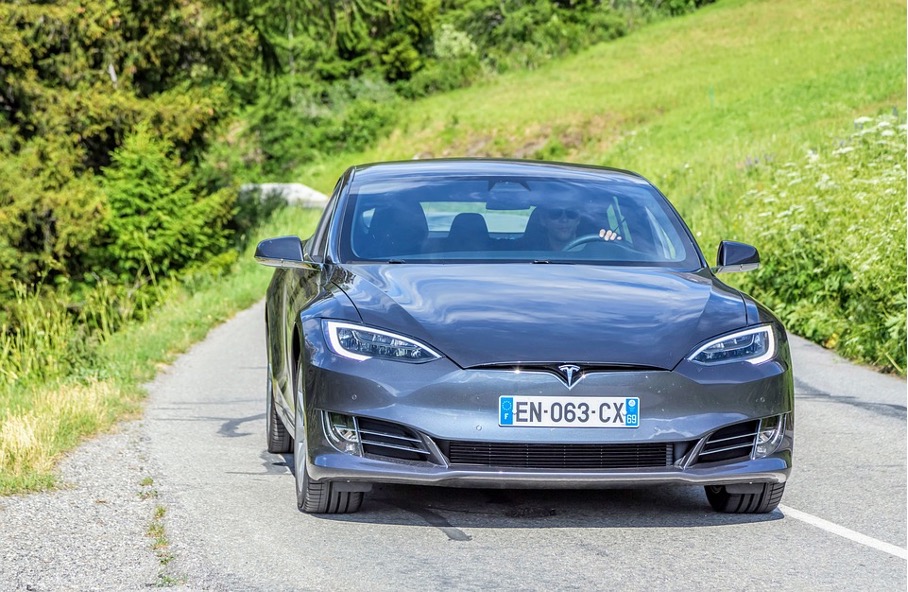Silence – unexpected source of danger
In the last ten years, we have witnessed an unprecedented advance of electric cars, which is supported by both technical and political considerations. The old-new technology has undoubtedly found a place for itself in the market and the next few decades may even put it in monopoly situation.
However, there are additional problems that in some cases require an urgent solution in the case of electric vehicles. There are characteristics which threaten safety – we can mention here the relatively frequent electrical fires, but also a not very noticeable, but still dangerous phenomenon: these vehicles run silently. We will discuss this point below.
Why is there no noise? And why does it matter?
A very short and clear answer can be given to the first question. The absence of an internal combustion engine allows our vehicle to have much fewer noise sources. It is true that the electric motor also makes noise during operation, but its noise level cannot be compared to that of a gasoline or diesel engine of the same power.
This is true both inside and outside the cabin – this will be the main topic of this article.
When electric cars began to spread in larger volumes on the continent in the early 2010s, all manufacturers cited the much more pleasant noise comfort as an advantage.
You might think that the fact that an electric car is quiet is an absolute advantage, since it does not put nearly as much strain on the human body in terms of acoustics – including passerbies or even the passengers.
The thought itself is correct, and the manufacturers have not made any false claims in this regard.
The source of the problem can be found in the effects.
This feature can be considered as a clear advantage until the vehicle is integrated into the road transport system. When this happens, we are faced with the fact that the lack of noise creates an unexpected disadvantage in some traffic situations.
According to rules ont he road, pedestrians must make sure visually that their passage is safe in order to cross the road.
However, it is a fact that many road sections are difficult to see, and in such cases it is an advantage even if we hear the approaching vehicle in advance, if we were not careless as pedestrians and tried to look around.
In the absence of this, we can easily put ourselves in a life-threatening situation.
In short: during transport, the vehicle with the minimum noise emission carries an additional source of danger.
According to a 2015 study by the Guide Dogs for the Blind association, for example, the rate of run-overs by visually impaired people in the United States increased by 40 percent since various electric and hybrid vehicles appeared on the roads.
The problem is particularly noticeable below a speed limit of 30 km/h, since the majority of such vehicles are as quiet as a bicycle at this time. According to the measurements, above 32 km/h, this effect ceases, since at least the rolling of the tires and the wind create enough noise for pedestrians to hear the approaching cars.

The electric car became dangerous in unexpected situations (source: www. pixabay.com)
Response of EU
The European powers saw the issue as quite clear and found a solution for that.
The manufacturers of new electric and hybrid cars put on the market from July 1, 2019 are obliged to equip them with a noise-generating device that cannot be switched off and operates between 0 and 20 km/h – this is also true for reversing (EU 2017/1576).
Legislators named it as Acoustic Vehicle Altering System (AVAS).
These are commonly known as sound generators.
In recent years, the EU has introduced a series of mandatory measures that have caused reduced number of fatal traffic accidents – at least that’s what the statistics show. These measures include electronic stability control systems in all vehicles, as well as advanced emergency braking systems and lane departure warning systems in both trucks and buses.
The device that makes the electric car loud
You might think that a sound generator is only found in BEV and hybrid cars – but you’d be wrong. The Euro 6, 6d temp and Euro 7 emission directives have made exhaust gas flow impossible, that we don’t even hear anything when accelerating despite the high-performance engines. The basics of the problem are the same what we experienced in the case of electric vehicles, but with a high-quality sound module, owners can easily overcome the problem.

Solution created by Hella (source: www.hella.com)
Of course, this started to attract the interest of the tuning market and aftermarket manufacturers as well. Sound generators designed to imitate the sound of powerful sports engines are produced in an uncontrollable quantity for both alternative drive and internal combustion engine cars.
According to European Union directives, vehicles emit white noise in the mentioned speed range. White noise is random noise used in audio technology, where the sound pressure level is constant in the entire frequency range examined (in the case of humans, 20 Hz – 20 kHz).
Is this the solution?
The question is legitimate that why we penalize the attentive part of the population and motorists against inattentive cyclists and pedestrians.
It is easy to see that there cannot be a perfect solution to this issue. If we believe the statistics, the EU probably chose the right direction by relying on the UN guidelines.
Regardless, it is true that one of the best features of electric cars was also taken away with the measure. According to surveys, almost 90% of BEV and hybrid owners tell that quiet running is one of the top 5 features of their vehicle.
It will be interesting to see how well the regulation will work in terms of road safety – and it could have an impact on electric car sales over the next decade or not.











